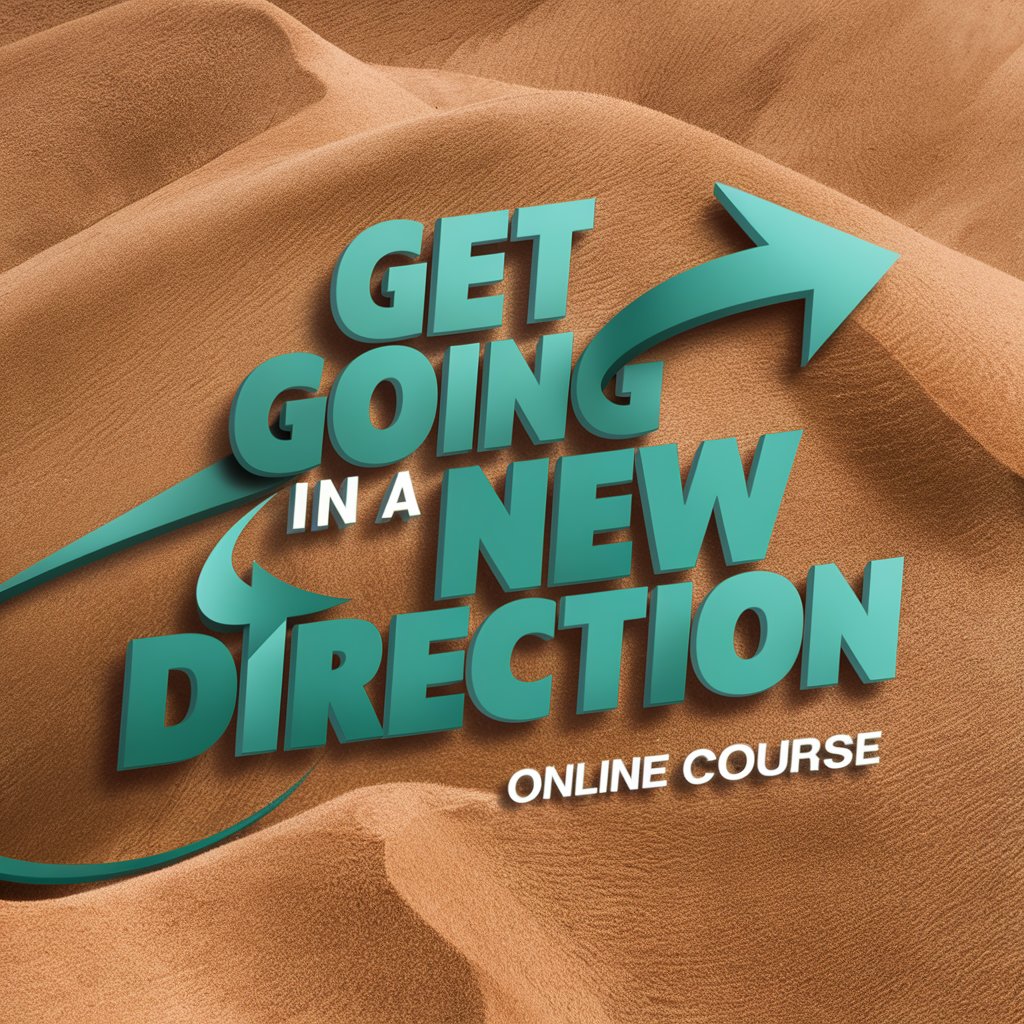A Guide to Living with Purpose Through Life Transitions:
When Sarah retired, she pictured her days unfolding like a cosy Pinterest board: endless brunches, maybe a vegetable garden, and mastering the fine art of companion planting. But the reality was…well, let’s just say she quickly grew way too familiar with the 2 a.m. slug onslaught, and even her cat was getting bored with her irregular hours. After binge-watching every British crime drama in existence and getting a little too invested in the local allotment’s pecking order, Sarah realised that she was starting to feel a bit lost.
That’s when she stumbled upon Ikigai, or, as she called it, “that Japanese word that’s supposed to make my life feel less…pointless.” Ikigai, a beautiful concept that somehow boiled down to finding joy and meaning in everyday life, felt like it could turn out to be her lifeline. But where to start?
So, she did what anyone in her position would: she took to volunteering at the community centre, figuring if nothing else, she’d at least get free coffee and maybe a funny story or two. They put her in charge of teaching kids about environmental sustainability—a fancy term for making her nag professionally about littering, which, honestly, felt like a skill she’d been honing since the ‘80s. She wasn’t exactly “cool” to the kids, but she wasn’t “uncool” either. And it turned out, talking to a bunch of seven-year-olds about composting was the best part of her week.
The more Sarah showed up, the more she got into it. She started creating PowerPoint slides with animated worms to demonstrate composting. She ran a “Most Ridiculous Recycling Contest” that awarded kids for crafting the ugliest art project out of garbage. She even got so enthusiastic that one kid’s mom asked if she could stop mentioning carbon footprints at bedtime.
Suddenly, Sarah had found her groove—a purpose, a thing that mattered. She wasn’t just Sarah the Retired; she was Sarah the Sustainability Guru. And it turned out, Ikigai wasn’t some ancient mystery at all. It was just a good excuse to be useful, even if it involved a little dumpster-diving on weekends.
Introduction
In times of transition, I always wish I had a map. Whether it’s a career change, a relocation, or a relationship ending, wouldn’t it be useful to have a map? These pivotal times often leave us questioning our purpose and our path. A “Life Transitions Map” would be a very useful tool to give to my From Troubled to Triumphant transformational retreat guests! who are anxious to find solid ground during life quakes.
Instead of a map, I often use the Japanese concept of Ikigai—often translated as “a reason for being”—which can serve as a beacon, guiding us through the inevitable ups and downs of life transitions. Made up of the Japanese words iki (life) and gai (worth), Ikigai directs us to find purpose and meaning in our lives.
Recently, the philosophy of Ikigai has gained global popularity as a way to approach life with intention. In Japan, Ikigai isn’t just about career success or financial security; it’s a holistic balance that brings satisfaction in all areas of life. For those going through major life changes, discovering their Ikigai can provide clarity and direction.
1. Understanding the Ikigai Meaning
The origins of Ikigai are deeply intertwined with Japanese culture, where the pursuit of a fulfilling life is seen as fundamental to health and happiness. Ikigai can be described as the intersection of four major elements, often illustrated as a Venn diagram:
- What you love: This represents your passions and interests.
- What you are good at: These are your talents, skills, and strengths.
- What the world needs: This refers to your life purpose, your impact on others, and your contribution to society.
- What you can be paid for: This is the practical element, including financial stability and career opportunities.

Ikigai is about finding a life path that brings together these four elements in a sustainable way. Ikigai doesn’t require a perfect blend of all four aspects at every moment in life. It’s about maintaining a balance that allows us to feel fulfilled and valued while still meeting our practical needs.
If you are going through a major life transition, the Ikigai framework can be both grounding and liberating. It encourages us to explore our passions, hone our skills, contribute meaningfully, and embrace new experiences—all while helping us adapt to changing circumstances. Understanding Ikigai as a flexible guide to life – rather than a strict formula – opens the door to self-discovery, making it particularly valuable in times of change. That is why it is part of my Rearing to Get Going in a New Direction online course:
Going through a Life Transition? Rewrite your story, reinvent yourself, become your best self and live your best life with the Rearing to Get Going in a New Direction: Finding Your Life Purpose Guided by Horses online course – Gain the clarity, motivation and direction you need to manifest your next chapter – in both your personal and professional life. Get immediate access

2. Ikigai in Times of Transition: Why It Matters
Periods of transition can be disorienting and filled with self-doubt. When life suddenly changes, we’re often left to confront questions about our identity, our goals, and what truly matters to us. People in such transitions may find themselves questioning their careers, their relationships, and even their sense of self. During these times, Ikigai provides a framework for making sense of change by helping us reconnect with what brings happiness, meaning, and purpose to our lives.
A career change, for example, often prompts reflection on our skills and values. Relocating might lead us to rethink our place in our community or society. Even retirement or an “empty nest” stage can be challenging as it requires us to redefine our daily routines and sense of accomplishment. The four elements of Ikigai help us confront these changes positively, enabling us to rediscover parts of ourselves that may have been forgotten or set aside.
By framing a life transition as an opportunity to realign, with Ikigai, you can move from feeling lost to feeling motivated and inspired. This mindset encourages us to see transitions not as setbacks, but as valuable opportunities for self-discovery.
3. The Four Elements of Ikigai Applied to Life Transitions
a. What You Love: Reconnecting with Your “Why” During Life Transitions
During life transitions, one of the most powerful ways to restore joy and inspiration is to reconnect with what you genuinely love. Whether it’s art, music, teaching, or volunteering, pursuing interests that bring you happiness can help stabilise you emotionally. Life transitions allow us to assess what brings us true joy.
Engaging in activities we love, even if they don’t directly impact our careers, can bring balance to our lives. New hobbies or old interests can offer a sense of renewal and can also lead to new connections and opportunities. Ikigai encourages us to explore and even prioritise these passions, as they are often the foundation of a life that feels whole and meaningful.
b. What You Are Good At: Recognising and Building on Your Strengths
Transitions often reveal new sides of ourselves, including skills or talents we may have overlooked. Take, for instance, someone who’s spent years in a technical job but feels more fulfilled in roles that involve empathy and communication. Life changes present an opportunity to reassess our talents and skills.
Strengthening existing skills or developing new ones can increase confidence and open up fresh career possibilities. Perhaps you’re a strong organiser, an excellent communicator, or a natural leader—identifying these skills can be life-changing. Self-assessment tools, mentorship, and community classes can help uncover talents and strengths that may have become invisible in a previous role.
c. What the World Needs: Redefining Your Role and Contribution
Life transitions often inspire us to consider how we contribute to the world around us. This element of Ikigai encourages us to reflect on the impact of our actions and on how we might make a meaningful difference in our communities. Sometimes, the traditional roles we’ve been in feel limiting or out of sync with our evolving values. Volunteer work, advocacy, mentorship, or even starting a small business can realign one’s sense of contribution. Engaging in activities that directly help others can offer a new perspective, reminding us that our Ikigai often connects us with the world in impactful ways.
d. What You Can Be Paid For: Balancing Passion and Practicality
For most people, financial stability is essential, especially during times of transition. One of Ikigai’s unique characteristics is its inclusion of the practical element: what we can be paid for. This aspect allows us to integrate our passions and skills in a way that is also financially sustainable. If you’re changing careers, you might consider researching fields that align with your interests and offer good job prospects.
Transition periods are ideal for exploring side projects or part-time opportunities that could become fulfilling sources of income. Whether it’s freelancing, consulting, teaching, or launching a small business, aligning your work with your passion can help you maintain financial independence while staying true to your evolving values.
4. How to Discover Your Ikigai Meaning: Practical Steps and Reflections
Step 1: Self-Reflection
Reflecting on what makes you feel alive and fulfilled is crucial to uncovering your Ikigai. Journaling can be particularly helpful here, allowing you to explore what activities bring joy, satisfaction, or meaning. Questions to consider include:
- What makes me feel energised?
- Which activities make me lose track of time?
- What work have I done that felt truly rewarding?
Step 2: Experiment and Explore
Trying new things can open up paths you may not have previously considered. If you’re unsure of your interests, experiment! Join classes, attend workshops or volunteer. Exploring different areas allows you to connect with people who share your passions and interests, leading to discoveries about yourself that deepen your Ikigai meaning.
Step 3: Seek Feedback and Perspective
Feedback from trusted friends, family, or mentors can offer insights you may not see yourself. Sometimes, others can identify strengths or interests you haven’t fully recognized. Constructive feedback can guide you toward career paths, hobbies, or projects that bring meaning and joy.
Step 4: Prioritise and Integrate
Ikigai doesn’t require perfection in all four elements simultaneously. Focus on integrating the parts of Ikigai that resonate most with your current phase of life. Prioritising passions, practical goals, or impact on others is often enough to guide you through challenging transitions with clarity and focus.
5. Real-Life Examples: Stories of Finding Ikigai Meaning Through Life Transitions
Career Change: Consider Sarah, who left her corporate position to pursue a career in teaching. Through Ikigai, she realized her passion for helping others and her talent for explaining complex topics in simple ways. Her transition was challenging, but aligning her work with her passion made it deeply fulfilling.
Retiree Finding New Purpose: After retirement, Michael found himself feeling adrift. He started volunteering at a local community centre, teaching kids about environmental sustainability. Michael’s new role gave him a renewed sense of purpose and allowed him to connect with the world in a meaningful way.
Relationship Shift: Following a major relationship change, Laura felt lost. Rediscovering her love for art and joining a community class helped her reconnect with her sense of self. Through Ikigai, she found balance and built new friendships that supported her journey forward.
6. Common Misconceptions About the Meaning of Ikigai
- Ikigai Isn’t Only About Career it encompasses all aspects of life. It’s not just about finding a dream job but rather about integrating passion, purpose, and practical needs into a fulfilling whole.
- It Doesn’t Require Perfection Ikigai doesn’t demand that all four elements be in perfect balance. Life is dynamic, and priorities shift over time. A partial integration of Ikigai can still provide a fulfilling and purpose-driven life.
- It Can Change Over Time As you grow, your Ikigai may evolve, adapting to new interests, strengths, and circumstances. This adaptability makes Ikigai a lifelong journey.
7. How Ikigai Can Build Resilience During Life Transitions
When life feels uncertain, focusing on Ikigai can provide emotional resilience. Knowing that you are contributing, learning, and pursuing your interests brings stability, even in times of upheaval. The guidance gained from Ikigai offers a mental anchor, allowing us to embrace transitions as opportunities rather than setbacks.
8. Five Q&As that address common questions about using your Ikigai during Major Life Changes:
Q1: Can I have more than one Ikigai?
A: Absolutely! Many people find purpose in multiple areas of their lives, and Ikigai can be a combination of different passions, skills, and contributions. For example, you might have one Ikigai related to your career and another related to a personal interest, like art or community service. Ikigai is flexible and can encompass various elements that together create a sense of meaning and satisfaction.
Q2: How can I start finding my Ikigai if I feel completely lost?
A: Start with small steps focused on self-discovery. Reflect on what makes you feel happy or fulfilled, even in small ways. Journaling, taking personality or strengths assessments, and exploring new activities can help. Ikigai isn’t something you necessarily find all at once; it’s often revealed gradually as you try different things and learn more about what resonates with you.
Q3: What if what I love doesn’t align with what I can be paid for?
A: It’s common for people to have passions that may not translate directly into a paying job. In this case, you can try to incorporate what you love as a hobby or side project. Another option is to look for ways to incorporate aspects of your passion into your career. For instance, if you love writing but work in marketing, you might focus on writing-based projects within that field. The key is finding a balance that allows you to engage with what you love in some way.
Q4: Can Ikigai help with smaller transitions, like a job change, as well as major life changes?
A: Yes! Ikigai is a useful tool for all kinds of transitions, big and small. Even if you’re only switching roles within the same field, you can use the principles of Ikigai to ensure that your new role aligns with your skills, interests, and sense of purpose. Every transition is an opportunity to check in with yourself and make sure your choices align with your values.
Q5: Is it normal for my Ikigai to change over time?
A: Definitely. Our passions, skills, and life circumstances evolve, so it’s natural for your Ikigai to shift as well. What felt meaningful in one phase of life might feel different in another. Regularly reassessing your Ikigai helps ensure that you stay aligned with your current self and that your purpose grows with you
Conclusion
Ikigai offers more than just a sense of purpose; it provides a roadmap for navigating life’s inevitable transitions with inspiration, motivation and resilience. It reminds us that fulfilment doesn’t come from achieving one goal but from the ongoing process of balancing what we love, what we’re good at, what the world needs, and what supports us practically. Life’s changes may feel overwhelming, but through the lens of Ikigai, they reveal new possibilities and a life that truly feels worth living.
| And if you feel you need a break, away from all the hustle and bustle, come and recharge your batteries here in the sun-drenched southwest of France. Walk part of the Camino de Santiago de Compostela and spend a few days in the presence of my patient, understanding and supportive Friesian and Falabella horses – even if you don’t interact with them at all, just having them around is calming and comforting – on a Stress-busting Camino de Santiago walking retreat to reinvent yourself, rewrite your story and start your sensational next chapter. |

Author Bio: Dr Margaretha Montagu – described as a “game changer”, “gifted healer”, “guiding light” and “life-enriching author” – is an experienced medical doctor, a certified NLP practitioner, a medical hypnotherapist, an equine-assisted psychotherapist (EAGALAcertified) and a transformational retreat leader who guides her clients through life transitions – virtually, or with the assistance of her Friesian and Falabella horses, at their home in the southwest of France.















